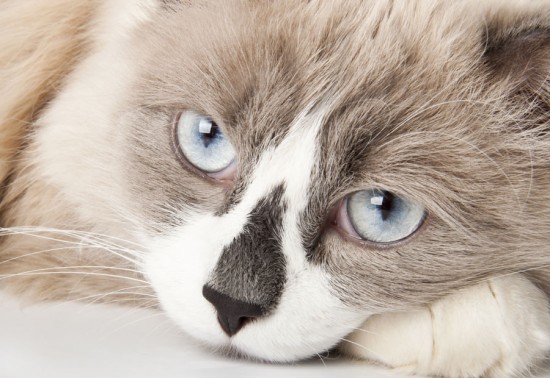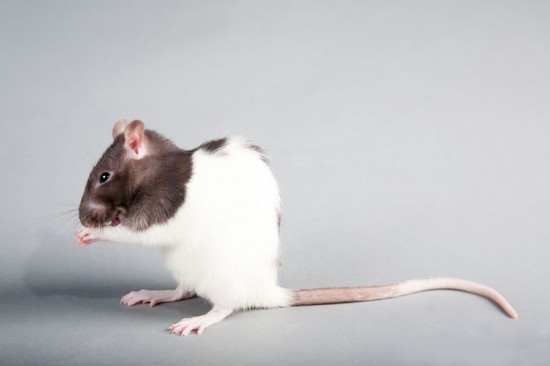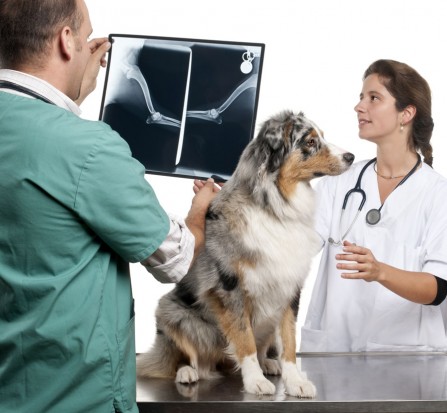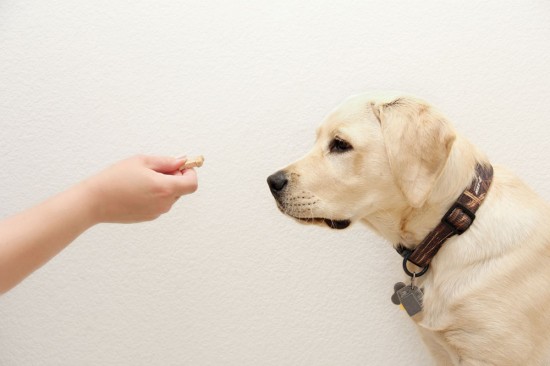

Inappropriate toileting is a common behaviour problem in cats. Toileting is a normal behaviour, with the simple function of ridding the body of waste products but it becomes a problem to the owner when the cat toilets in an inappropriate place. Although the location of toileting is probably not a problem to the cat, the reason that the cat has changed its toileting location may indeed indicate that the cat is unhappy about something in its environment, or that he is ill.
Squatting to toilet leaves a cat vulnerable to attack, cats therefore generally prefer to toilet in locations that are quiet and private. Although the cat’s core area (where it feeds and rests) is safe from predators and competitors, toileting in this area can increase their risk of catching parasites. Therefore, to avoid the risk of parasite transmission cats generally toilet on the edge of their core areas.
Preference for litter substrates form early in life - kittens may learn which substrates to use by investigating what substrate their mother uses. The presence of appropriate substrate may also trigger digging behaviour, which is associated with toileting. Litter substrates are generally preferred if the cat can dig in it to bury its urine or faeces. Appropriate learning is therefore likely to occur if the breeder or owner provides appropriate substrates early in the kitten’s life.
Once a suitable site is found, cats usually continue to return to the same location using scent as a cue, unless something about the site becomes unacceptable.
In cases of inappropriate toileting it is very important to first rule out illness or pain as a reason for the changed behaviour. Therefore, you must take your cat to your vet for a thorough examination. Any condition that affects gastrointestinal or urinary function, may alter toileting behaviour, for example pain when toileting can become associated with the location. Additionally, cats with mobility problems, such as arthritis, may find climbing into a high-sided litter tray or through a raised cat flap painful. Conditions resulting in increased drinking or urination may also influence inappropriate toileting. These are just a few of the medical influences for toileting problems.
Once illness or pain has been ruled out a full behavioural assessment is essential. Firstly, it must be determined whether your cat is actually relieving itself, or if he or she is urine spraying. Your cat’s posture and the location of the urine can help to distinguish between these. A cat relieving itself normally squats in a secluded location and produces a large puddle of urine on the horizontal surface. The urine is then usually covered. A spraying cat will stand backed up against a vertical surface, onto which it deposits a small volume of urine. The surface will be in a visually obvious or behaviourally significant location. Any cat can spray, whether male, female, neutered or unneutered.
Cats might start to toilet in inappropriate places if their normal location is no longer acceptable or accessible. For example your cat may have developed a dislike for the location through a disturbance or frightening experience. This is likely if his litter tray is placed in a noisy environment, or where it can be disturbed by children or other pets. A cat living in a multi-cat household may not want to pass another cat to access his litter tray or the cat flap. Alternatively, if your cat normally toilets outside, any unwillingness to go out may be a result of something that is frightening to your cat outside, and consequently inappropriate toileting may occur indoors if a suitable litter tray is not provided. Cats will only toilet where they feel secure, and in some cases this might be where the owner is, or where there is a strong scent of the owner. Such cats may then develop a preference for soft materials, such as clothing or bedding. Additionally, if the cat's food is placed too close to the litter tray it may toilet elsewhere to avoid fouling its eating area.
Smell is also very important. The smell of cleaning products may be aversive, whereas, thoroughly cleaning the litter tray may remove the scent cues associated with toileting. Alternatively, the smell of urine may become too concentrated in a covered litter tray or if the tray is not cleaned out regularly enough.
If the cat did not have the opportunity to develop an appropriate substrate preference as a kitten then it may continue to seek out substrates that do match its preference, such as paper or textiles. However, even appropriate preferences can cause problems if the owner replaces the normal cat litter with another type that the cat does not recognise as a toileting substrate. Deodorising litter may be aversive when wet because of the chemicals that are released. Alternatively some substrates may be uncomfortable to stand on.
Any environmental or social issue that may be underlying your cat’s behaviour must be addressed - it is unproductive to punish the cat or restrict its access. Simply moving the litter tray to a quiet area may be sufficient; however, many cases are more complicated than this. If for example another cat is blocking access to the litter tray or garden, then additional trays or exits should be provided to ensure your cats do not have to pass each other to access a toileting site. As a general rule there should be one tray per cat plus one. Make sure you place them in different areas of the house so the cat will always be able to access a clean tray and can choose to urinate and defecate in different trays, as some cats prefer. Providing a litter substrate that is easy to dig in such as sand will be attractive to many cats, however, preference can be tested by offering a variety of substrates.
Just resolving the underlying factors may not be sufficient as the cat may return to the inappropriate location if scent cues remain. Therefore, soiled areas must be cleaned thoroughly. Cleaning products with ammonia or strong odours should be avoided. Instead, a 10% solution of biological washing detergent can be used to thoroughly clean the surface. Once this has been rinsed and allowed to dry surgical spirits should be applied and left to evaporate off (test these products on an inconspicuous area first to ensure no discolouration occurs).
 Horses That Weave, Box Walk, Crib Bite Or Windsuck
Horses That Weave
Horses That Weave, Box Walk, Crib Bite Or Windsuck
Horses That Weave
 Is A Schipperke The Right Dog For You?
Is A Schipperke T
Is A Schipperke The Right Dog For You?
Is A Schipperke T
 Common Health Problems Of Pet Rats
Common Health Pro
Common Health Problems Of Pet Rats
Common Health Pro
 Pet Insurance - Making It Work For You!
Pet Insurance - M
Pet Insurance - Making It Work For You!
Pet Insurance - M
 Four Simple Steps For Getting Your Dog’s Attention
Four Simple Steps
Four Simple Steps For Getting Your Dog’s Attention
Four Simple Steps
Copyright © 2005-2016 Pet Information All Rights Reserved
Contact us: www162date@outlook.com